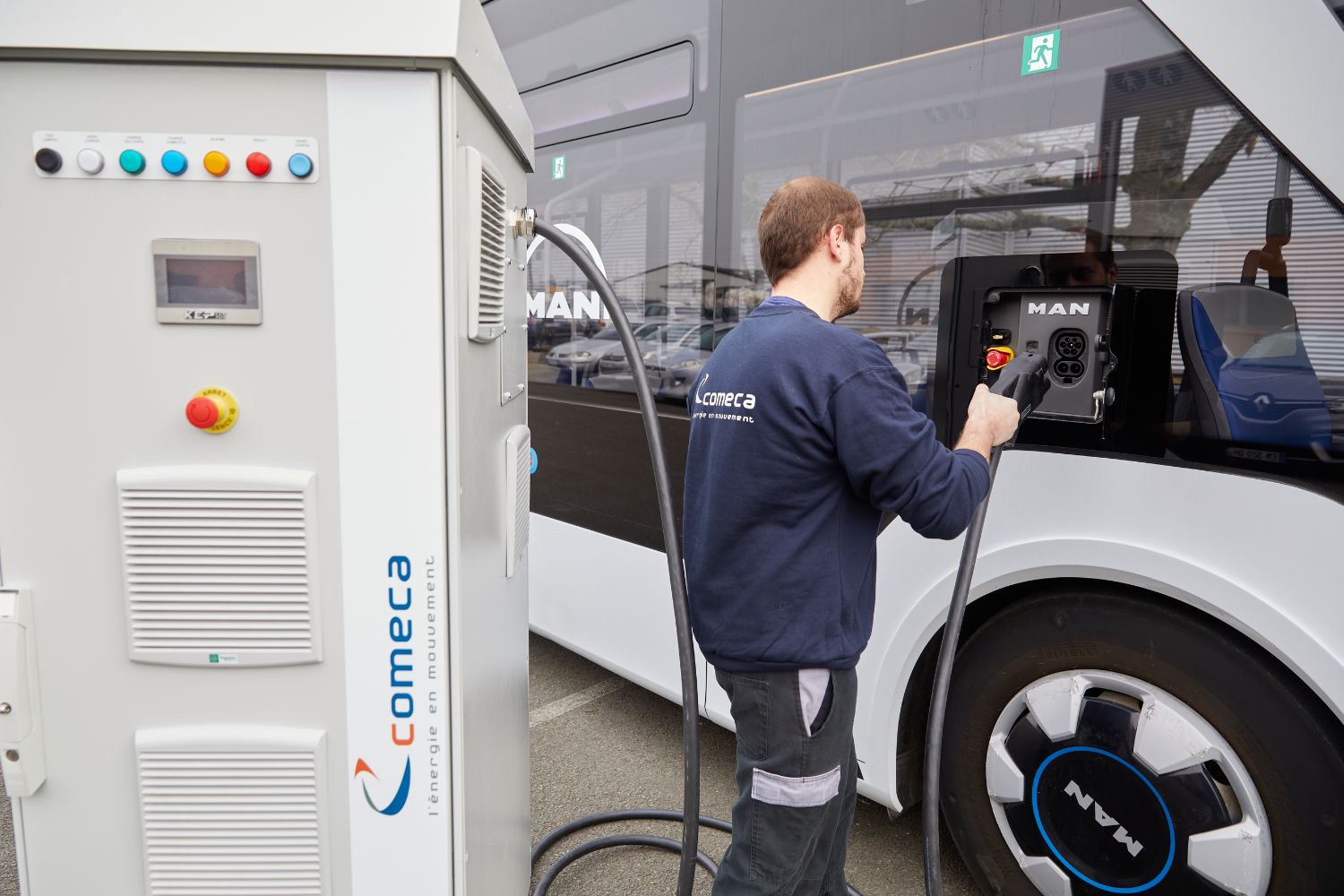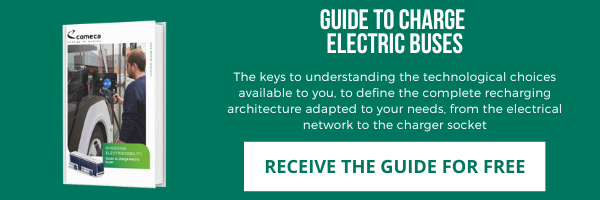Solutions and principles for charging electric buses
Electric buses are becoming increasingly common in cities around the world, as they offer many advantages over traditional petrol buses. They are cleaner, quieter and more economical to run. However, they require regular recharging of their batteries to keep them running. In this article, we will explore the different charging solutions available for electric buses, as well as the basic principles of charging.
Types of charging for electric buses
There are two main types of charging for electric buses: in-station charging (per socket) and in-line charging (per unit).
In-station charging (CCS2 in Europe) involves connecting the bus to a dedicated charging station when it is not in use. This solution is generally used when the bus needs to be charged for an extended period of time, such as overnight.
Online charging (by opportunity), on the other hand, is done while the bus is in operation. The bus is equipped with a pantograph, which is a device for transferring electricity from the distribution network to the bus. The pantograph connects to an overhead cable suspended above the track, which is supplied with electricity. In-line charging is usually used to quickly recharge the bus during stops, so that it can continue to operate without interruption. No manual intervention is required with this technology: it is the vehicle that warns of its arrival and alerts the charger of its intention to charge.
The different ways of charging electric buses
Different recharging solutions are possible for 100% battery-electric buses:
- Charging at the depot : the bus is recharged during the inactivity phase (usually at night) in order to be ready for the start of the service (in the morning). The distribution of energy to all the charging stations is then managed globally to smooth out the electrical power over the entire charging period, which is known as "smart charging". Various elements are taken into account : bus parking times, service schedules, etc. This technology makes it possible to reduce the size of the electricity delivery point and the electrical infrastructure associated with the charging stations. It also reduces the amount of electricity and therefore the total cost of ownership of the buses.
> Further reading: Discover the benefits of smart charging for electric buses
- The end-of-line charging system : this method allows rapid recovery of autonomy and thus limits the size of the batteries. The bus terminus must be connected with sufficient power to limit the down time of the bus to a few minutes.
- The pantograph charging system (ascending or descending) : This system requires a stop of a few seconds or minutes (from 3 to 10 minutes) and allows the vehicle with low capacity on-board batteries to increase its range by limiting the size of its battery. The vehicle is therefore recharged at some station to ensure its journey.
These methods are not necessarily exclusive and can be combined to suit the needs of each mobility operator and each city : it is possible to recharge the bus in the evening at the depot and by pantograph during the day, for example. The preferred solution must be selected taking into account the needs and constraints of each player.
Considerations when planning the charging of electric buses
There are several considerations to be taken into account when planning the charging of electric buses, including the interoperability between the bus and the charger. Interoperability refers to the ability of an electric bus to be charged on different types of chargers, regardless of their manufacturers or technologies. This maximises the flexibility and efficiency of charging buses, allowing them to adapt to the different charging systems available in cities.
It is essential to ensure that the bus has easy access to charging stations or overhead in-line charging cables. The time needed to fully recharge the battery should also be taken into account, to avoid the bus running out of battery while in service. In addition, it is crucial to ensure that charging costs are reasonable and affordable, to maximise the economic benefits of electric buses through SmartCharging.
In conclusion
Electric buses are becoming increasingly common in cities around the world, offering many advantages over traditional petrol buses. However, they require regular recharging of their batteries to continue operating. There are several charging solutions for electric buses, including in-station charging and in-line charging, which can be tailored to the needs of bus operators. There are also several ways to charge electric buses, depending on the type of battery used, and it is important to follow the manufacturer's instructions to ensure optimal battery charging.
There are several considerations when planning the charging of electric buses, such as interoperability between the bus and the charger, access to charging stations or overhead in-line charging cables, charging time and charging costs. By addressing these considerations, electric bus operators can maximise the economic and environmental benefits of these clean, energy-efficient vehicles.
Ultimately, charging solutions for electric buses are crucial to their successful operation and integration into public transport networks in cities around the world.


